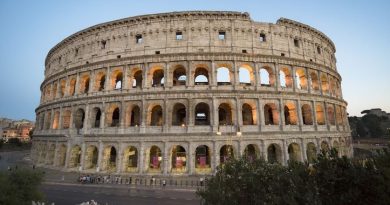Camino de Santiago: A Pilgrimage Experience Combining Faith and Culture
The Camino de Santiago, also known as the Way of Saint James, is a network of pilgrimage routes leading to the Cathedral of Santiago de Compostela in northwestern Spain. The tradition dates back to the 9th century, when the remains of Saint James the Apostle were discovered in Compostela. Since then, millions of pilgrims from all over the world have walked the Camino in search of spiritual enlightenment, cultural enrichment, and a sense of community.
History and Significance:
The Camino de Santiago has a long and rich history, deeply embedded in Christian faith and tradition. According to legend, the apostle Saint James was beheaded in Jerusalem and his remains were brought to Spain by his disciples. In the 9th century, his tomb was discovered in Compostela, which became a major pilgrimage destination for Christians seeking spiritual renewal.
The Routes:
There are numerous Camino routes originating from different points across Europe, all converging in Santiago de Compostela. The most popular route is the Camino Francés, starting in Saint-Jean-Pied-de-Port in the French Pyrenees and spanning over 780 kilometers. Other notable routes include the Camino del Norte along the Spanish coast, the Vía de la Plata from southern Spain, and the Camino Portugués from Portugal.
Experiencing the Camino:
Walking the Camino is a physically and mentally demanding yet incredibly rewarding experience. Pilgrims typically walk for several weeks or months, carrying their own backpacks and staying in albergues (pilgrim hostels) along the way. The journey offers an opportunity for introspection, reflection, and connection with nature. It also fosters a sense of community among pilgrims from diverse backgrounds, who share meals, stories, and experiences along the path.
Cultural Immersion:
Beyond the spiritual aspect, the Camino provides a unique opportunity for cultural immersion. Pilgrims traverse diverse landscapes, from lush forests and rolling hills to historic towns and bustling cities. They experience local customs, cuisine, and traditions, enriching their understanding of Spanish culture and history.
The Camino’s Impact:
The Camino de Santiago has had a profound impact on individuals and communities throughout its history. It has fostered religious devotion, promoted cultural exchange, and contributed to the economic development of towns along the route. In recent years, the Camino has experienced a resurgence in popularity, attracting pilgrims from all walks of life seeking a meaningful and transformative experience.
Whether motivated by faith, a thirst for adventure, or a desire for self-discovery, the Camino de Santiago offers a unique and unforgettable journey that combines spiritual enrichment, cultural immersion, and a sense of community.




